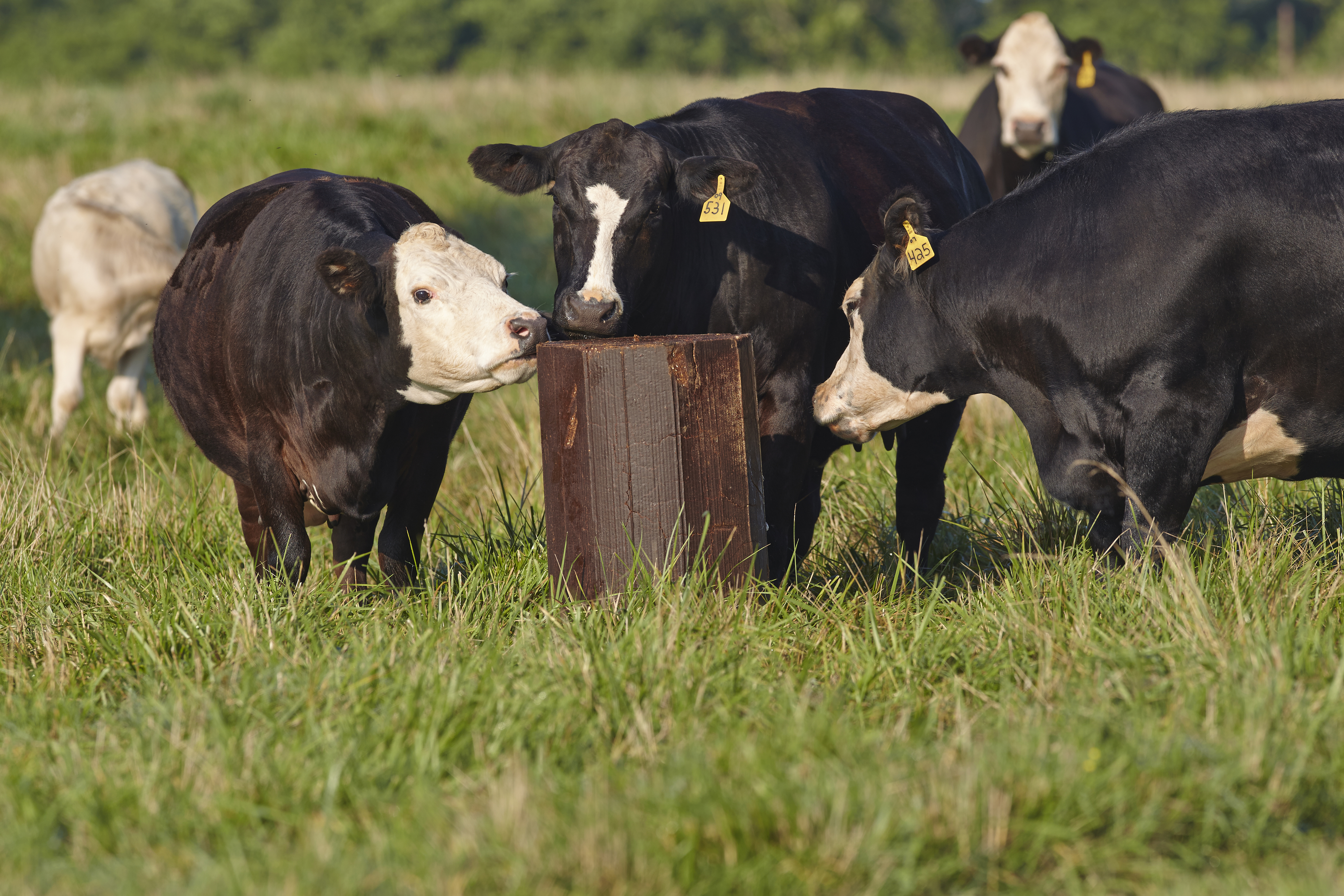
Agricultural News
4 tips to prepare the herd for spring and summer grazing
Fri, 11 Apr 2014 05:33:39 CDT

Late spring and early summer pastures provide essential nutrients to the cow herd, as the cow cares for herself, the calf at her side and her developing fetus. During this period, pasture management is especially important as pasture forages can provide highly variable nutrient levels.
That's according to Doug Hawkins, Ph.D., beef cattle consultant for Purina Animal Nutrition. Hawkins says that pasture management beginning in early spring can directly impact the body condition score (BCS) of the cow, the growth of the calf at her side and conception rates post-calving. "Beef producers are most often familiar with supplementing pasture during late summer, as supplementation consumption rates are often highest then. However, taking steps to offer supplements in late spring and early summer, can help the cow perform consistently and help prevent imbalances before forage quality declines," he says. "Adding a proactive management program during this timeframe will promote consistent cow performance through summer."
Following are four tips to keep in mind this spring.
1. Design a plan for fly and pest control
"Flies and parasites can tie up nutrients; meaning the cow may consume nutrients but still fall behind in BCS and performance," Hawkins says. "The goal should always be to eliminate the problem before it begins."
2
Most successful fly control programs in the upper U.S. include prevention beginning at least 30 days prior to fly emergence in early spring. The process should then continue through 30 days after the area's first kill frost. Typically prevention is needed March through October, depending on the area's climate. Warmer areas should consider a year-round fly control program.
2. Provide continuous access to fresh, clean water
"Water consumption is very critical through all seasons, but especially as temperatures begin to increase," Hawkins says. "In the summer the cooler the water, the better."
3
Regardless of season, lactating cows also require nearly twice as much water compared to dry cows.
"To keep water cool and fresh, place the water source in the shade and use concrete troughs rather than plastic troughs," Hawkins advises. "If feeding out of ponds, make sure the water is fresh. Water consumption impacts feed consumption, so more water can equal more feed and greater performance potential."
3. Create a flexible supplementation program
"Forage quality is always changing as grasses mature," Hawkins says. "It's very difficult to adjust protein and mineral supplementation levels each day, so create a flexible supplementation program."
One way to fill potential pasture voids in nutrients without over-supplementing is to use products with Intake Modifying Technology®. This technology is formulated to help the cows consume supplements at the rates they need, when they need them to maintain a consistent BCS.
"We're seeing a lot of ranches going to a 12-month cow care program with year-round supplementation to try and maintain the cow at a 5.5 to 6 BCS at all times," Hawkins says. "Using supplements with Intake Modifying Technology® allow flexible supplementation for consistent production."
4. Introduce supplements early
"Traditionally, supplements have been added to pastures in late summer when cows have already begun to slip in body condition," Hawkins says. "This can be an expensive practice as you're then working to regain condition rather than maintaining."
For consistent conditioning, Hawkins recommends introducing supplement to the herd when cows have good BCS and when the pasture is still producing high-quality forage.
"Acclimate the herd to the supplementation program early," he says. "This way, when the forage starts to decline in late summer, the cows are less likely to over-consume the supplement. It's all about getting ahead of the 8-ball."
WebReadyTM Powered by WireReady® NSI
Top Agricultural News
More Headlines...



















